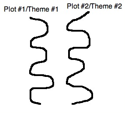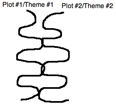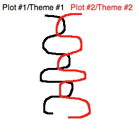Three Tips For Breaking Someone's Heart With Your Nonfiction
Jameelah Lang
Apr 20, 2013
Over at The Kenyon Review, the editors have been running a stellar series on their blog called "Why We Chose It." And I admit: I've been stalking these posts. Not because the Kenyon Review's website looks so good (which it does), or because it includes in-color, friendly-looking headshots of its editors (which it does)--not even solely because I love The Kenyon Review (which I do). But because these posts offer us--the readers, the writers--the rare chance to pick the brains of some of the most talented editors in the country. I have been part of Team Nonfiction at Gulf Coast for three years now, and the question I get the most--at literary festivals, readings, conferences, book fairs--is, "How do you choose?" The answer I give (and it's the truth, believe me) is that we just want a good story. We try not to limit or rule out any style or aesthetic, any subject matter, any font or formatting choice. We want our hearts broken; we want to laugh uncontrollably and call our friends and tell them that they must, must read your piece. And you deliver. Each issue, we put out work that I wish I had written myself and that I'm proud and honored to edit. There are, though, a few hints that I wish I had had when I first started writing nonfiction. Some of these I've gleaned from writing myself; some of these are knowledge-kernels shared by our wonderful faculty here at Houston; some of these I've picked up from reading your work and trying to steal your tricks and talents. These hints also constitute some of the problem-areas that we here at the journal see most often among nonfiction pieces that don't quite make it, and that--when attended to--will easily take a piece from leaves-a-sort-of-dull-ache-in-your-heart to full-on-undeniable-heart-breakage.
 But could work like this:
But could work like this:
 Or this:
Or this:
 If you want to see some writers who pull off this sort of structure flawlessly, check out Patricia Hampl's piece "Montaigne's Lute" or Melissa Landrigan's "Monsters" in our Fall 2013 issue, due out in just a few months.
3. Don't Disregard Small Moments and Themes
Sometimes as writers we forget that we can arrive at larger conclusions or emotional moments by focusing on small, specific details and narratives. I think it's natural to try to tackle a large, abstract idea through a large, abstract narrative; however, consider work like Becca Evanhoe's "Approximately 36 Toilets," which is about, well, toilets--but also grief and identity. Or, Jennifer Munro's "Life Cycles" about the motorcycles she's owned. Or, "Those Poor Drowned"--a piece by Matthew Gavin Frank due out this fall--that is, in part, about casseroles.
That's not to say, of course, that there isn't room for epiphanies, life-changers, or game-changers--just that sometimes, this is the stuff that life is made of: toilets, motorcycles, and casseroles.
If you want to see some writers who pull off this sort of structure flawlessly, check out Patricia Hampl's piece "Montaigne's Lute" or Melissa Landrigan's "Monsters" in our Fall 2013 issue, due out in just a few months.
3. Don't Disregard Small Moments and Themes
Sometimes as writers we forget that we can arrive at larger conclusions or emotional moments by focusing on small, specific details and narratives. I think it's natural to try to tackle a large, abstract idea through a large, abstract narrative; however, consider work like Becca Evanhoe's "Approximately 36 Toilets," which is about, well, toilets--but also grief and identity. Or, Jennifer Munro's "Life Cycles" about the motorcycles she's owned. Or, "Those Poor Drowned"--a piece by Matthew Gavin Frank due out this fall--that is, in part, about casseroles.
That's not to say, of course, that there isn't room for epiphanies, life-changers, or game-changers--just that sometimes, this is the stuff that life is made of: toilets, motorcycles, and casseroles.

Comments (0)
Add a Comment